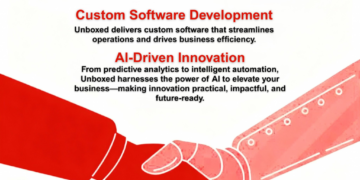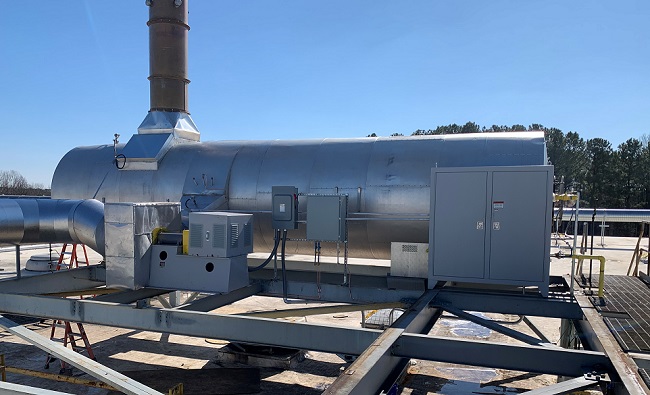Ever walk by a running industrial oven or curing tunnel and feel the heat? That warmth isn’t just uncomfortable for you—it’s money slipping out the door. With advanced “heat recovery systems,” this excess energy can be captured and reused. For example, studies suggest you can recover up to about 90% of exhaust heat from ovens in paint-shop setups by using heat exchangers.
➡ Relatable part: Think of your smartphone running hot—energy is wasted as heat. Now scale that up to an entire manufacturing line.
➡ Tip: If your facility has large ovens or spray booths, look into integrated heat-recovery systems to reduce fuel/energy bills.
2. What Makes a Good Heat Recovery System?
A well-designed system for industrial applications includes features like high-efficiency heat exchangers (recuperators), thermal wheels, or multi-stage heat recovery loops.
Key benefits include:
- Pre-heating incoming air or process fluids using waste heat.
- Lowering fuel consumption and emissions.
- Improved comfort or ambient conditions in the facility.
➡ Relatable part: Just like picking up a reusable water bottle instead of tossing plastic, recovering heat means you get more out of what you already paid for.
➡ Tip: Audit your exhaust streams—where are the hot gasses or heated air going? That’s your recovery opportunity.
3. Ovens, Paint Booths & Cleaning Lines – The Usual Suspects
- Large industrial ovens (curing, drying, baking) generate high exhaust temperatures.
- Paint booths emit heated air and volatile organic compounds (VOCs).
- Cleaning equipment / thermal cleaning lines (burn-off ovens, deoilers) often operate at high temperatures too.
Each of these is a prime candidate for energy recovery or emission control equipment. For example, booths and ovens feeding into a thermal oxidizer with heat-recovery features are being used in major projects.
➡ Relatable part: Imagine your car’s airconditioning blasting heat outside while you sit cold inside—the waste is obvious. In a factory you might not feel it, but it’s happening.
➡ Tip: When planning new equipment or retrofits, ask: “Can the exhaust be recovered? Can the emissions treatment be paired with heat reuse?”
4. Enter the Thermal Oxidizer & Thermal Cleaning Solutions
When painting, coating or cleaning materials, harmful emissions like VOCs or HAPs (hazardous air pollutants) must be treated. A thermal oxidizer uses high temperatures to convert these into CO₂ + H₂O.
Even better: combine it with heat recovery so the hot exhaust isn’t wasted—recycle it to preheat air or material. High-efficiency designs (RTOs) can reach 95-%+ thermal efficiency.
➡ Relatable part: Think of the oxidizer as the “cleanup crew” for nasty gases, while the heat recovery is the “bonus reuse team” that turns cleanup into savings.
➡ Tip: For a plant with paint booths or ovens, exploring a combined thermal cleaning + heat recovery system can yield regulatory compliance and energy gains.
5. Why This Matters Right Now
With energy costs rising, regulatory scrutiny growing (on emissions and sustainability) and corporate responsibility becoming a priority, the combination of equipment—heat recovery systems + ovens + paint booths + thermal oxidizer + cleaning solutions—is no longer optional.
- You reduce operating cost.
- You reduce carbon footprint.
- You strengthen your competitive position.
➡ Relatable part: It’s like switching to LED lighting plus solar panels—both reduce your energy bills and your exposure to sudden price hikes.
➡ Tip: Build a business case: estimate cost savings from recovered heat + compliance benefits + ROI timeframe.
6. Interactive Q & A Section — Your Questions Answered
Q1: How big does the potential savings really get?
A1: In some oven exhaust heat-recovery studies, up to ~90 % of the heat could be reclaimed.
The actual savings depend on: exhaust temperature, volume, duty cycle, recovery equipment cost, and how the reclaimed heat is used (pre-heating, HVAC, process).
Q2: Can I retrofit an existing paint booth + oven system for heat recovery?
A2: Yes — many systems are designed for retrofits. But you’ll want to evaluate duct layouts, exhaust volumes, available space for heat exchangers, and controls. Look into designs where a thermal oxidizer is integrated with heat recovery.
Q3: What’s “thermal cleaning equipment” and why include it?
A3: Thermal cleaning equipment includes ovens or furnaces that burn off/residue removal (e.g., deoilers, burn-out ovens). These often generate high temperature exhaust streams—ideal candidates for heat recovery.
Q4: Any caution or trade-offs?
A4: Yes — initial capital cost may be higher for equipment with integrated recovery. Maintenance of heat exchange surfaces, fouling, corrosion and ensuring the recovery system doesn’t degrade the cleaning/emission control process are important. Also, the economic payback depends on energy costs and usage patterns.
7. The Takeaway: Make What’s “Wasted” Work for You
Don’t treat exhaust heat, paint-booth emissions or cleaning-line ovens as waste—they’re opportunities. By integrating systems: ovens + paint booths + thermal oxidizers + heat recovery you turn waste streams into assets. Start by identifying where your plant is generating high‐temperature exhaust and ask: “Can this heat be captured? Can the emission control process be leveraged for energy reuse?”
The results: lower energy bills, stronger compliance, and operational systems that work smarter, not just harder.

















